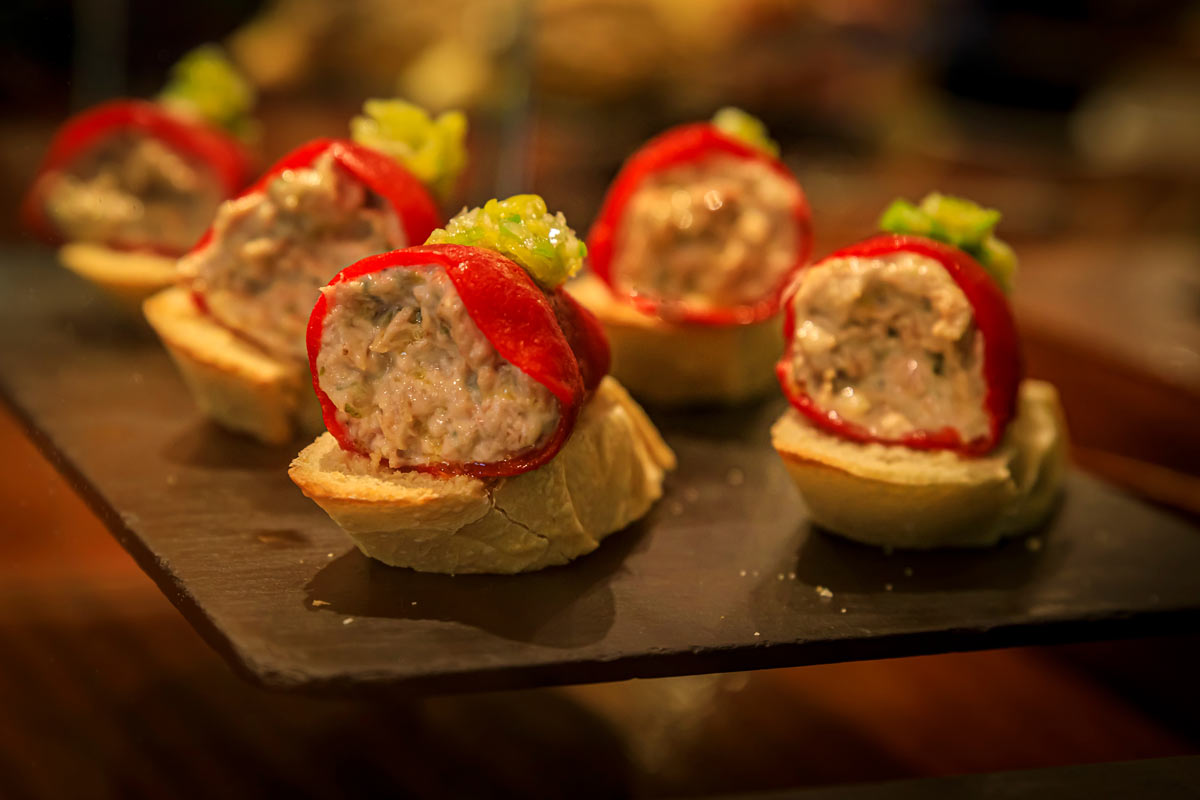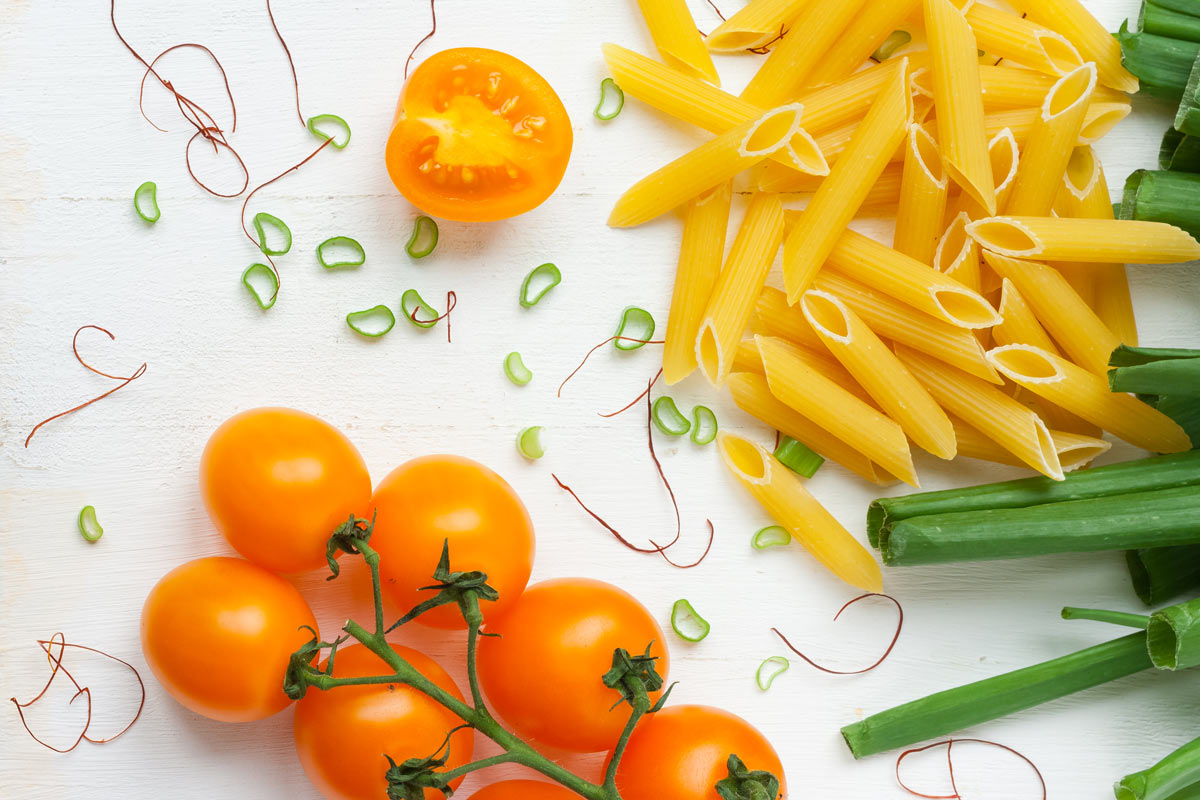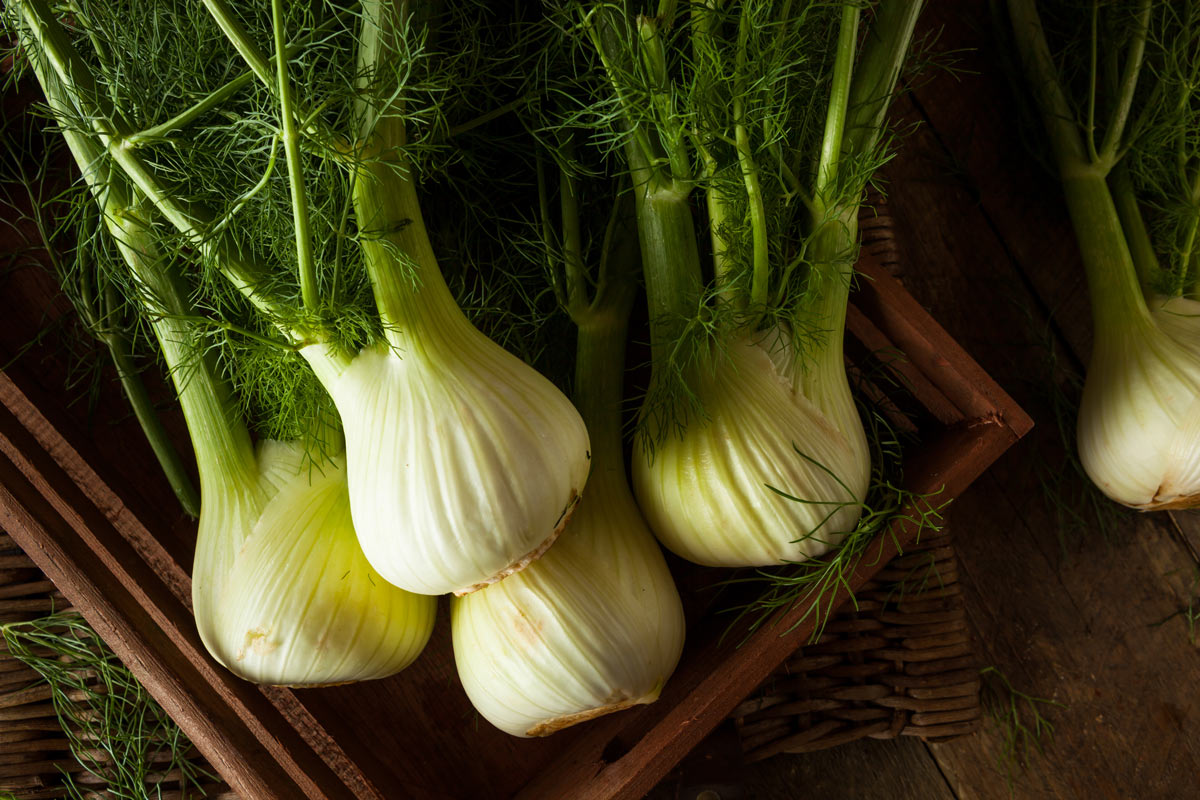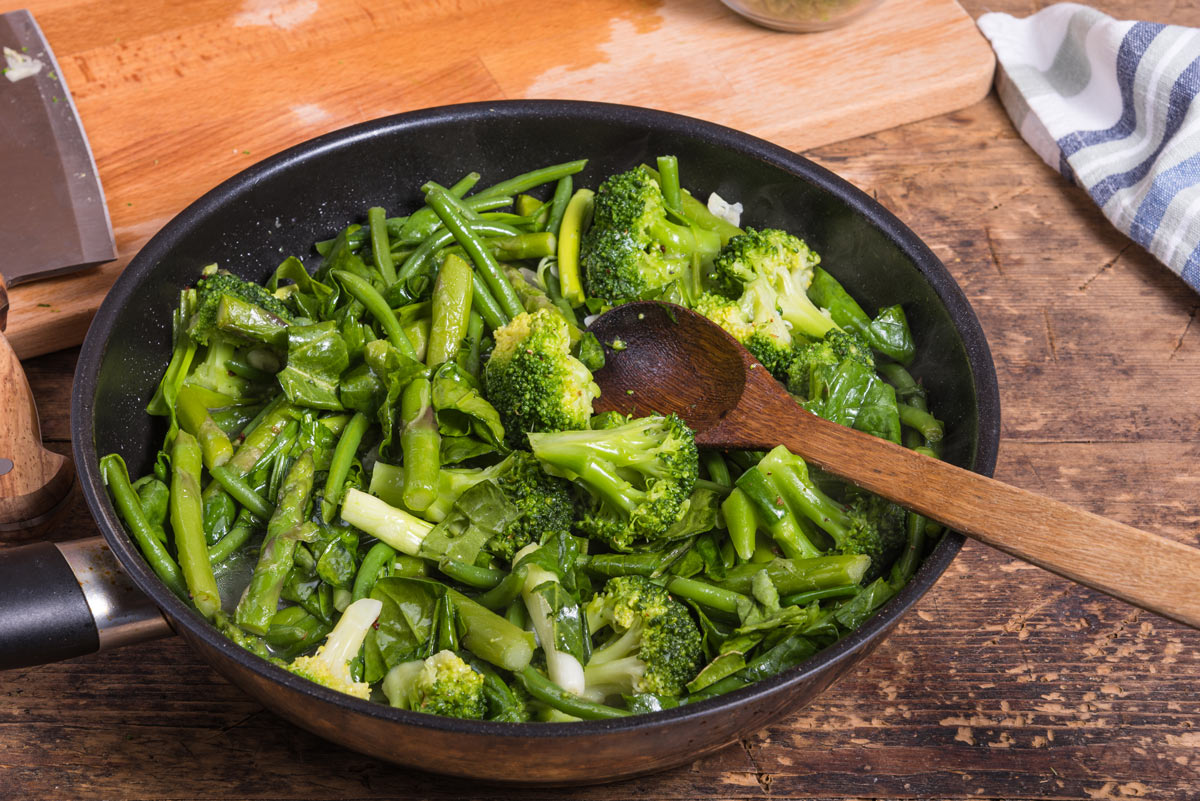Crab-Stuffed Piquillo Peppers Recipe, Spotlight on Crabmeat, Pickling Peppers, Block Out Light for Better Sleep and the Importance of Moving Now to Be Able to Keep Moving Later
Stuffed peppers are always a huge hit at gatherings. The small ones used in this recipe make a perfect finger food, and the crabmeat filling makes them decadently delicious as well as healthy. Speaking of health, I’m continually amazed at the variety of research published on a near-daily basis. The two articles I’m sharing this week are on topics that often fly under the radar: the underappreciated health consequences of too much light in the bedroom while sleeping and the underappreciated benefits of lifelong leisure activities for muscle function in older age.
Crab-Stuffed Piquillo Peppers
 Crab-Stuffed Piquillo Peppers
Crab-Stuffed Piquillo PeppersPiquillo means “little beak” in Spanish, and piquillo peppers get their name from that shape, though, ironically, they don’t have the “bite” of many other pepper varieties. Grown in the Navarra region ofnorthern Spain near the town of Lodosa, they’re very mild.After harvest, they’re fire-roasted for a sweet and smoky flavor, peeled and seeded by hand, then packed in brine. You can purchase them from many online purveyors. For a variation on the crabmeat, try flaked Spanish tuna.
Ingredients
- Extra virgin olive oil, about 3 tablespoons in all
- 6 ounces goat cheese or cream cheese, at room temperature
- 1 tablespoon dry Spanish sherry
- 1 cup crabmeat, shredded
- 3 tablespoons finely chopped pitted black olives, preferably Spanish
- 3 tablespoons finely minced scallion tops (green parts only)
- Kosher or coarse sea salt
- Freshly ground black pepper
- 12-ounce jar of brined whole piquillo peppers, drained
Directions
Step 1
Preheat your oven to 425°F. Drizzle the bottom of a baking dish with olive oil and set aside. Use a wooden spoon to combine the cheese and sherry in a bowl. Fold in the crabmeat, olives, and scallions, and season to taste with salt and pepper.
Step 2
Transfer the cheese-crab mixture to a piping bag fitted with a 1/2-inch donut filler tip, or use a sturdy resealable plastic bag and snip off one of the lower corners to make a 1/2-inch opening. (In a pinch, you can use a small spoon.) Gently pipe about a tablespoon of the cheese-crab mixture into each pepper, being careful not to overstuff and risk tearing the walls of the peppers.
Step 3
Arrange the stuffed peppers in a single layer on the bottom of the baking dish. Drizzle a few drops of olive oil over the top of each pepper. Bake until the cheese is bubbling, about 12 minutes.
Yields 6 to 8 appetizer servings

Healthy Ingredient Spotlight
A primer on crabmeat
Buying crabmeat can be confusing, with many different types at many different price points. Here are the varieties you’re most likely to see at stores, according to the experts at Phillips Seafood, the 100-year-old Baltimore, Maryland-based company specializing in high-quality crabmeat.
Jumbo lump crabmeat comes from the two large muscles attached to the crab’s swimming fins. These nuggets have an impressive size, bright white color, and delicious crab taste. Use this crabmeat in recipes when the crabmeat will be visible and you want to make a wow statement. It’s usually the most-expensive option.
Lump crabmeat combines broken pieces of jumbo lump and special crabmeat (see below). It’s ideal for crab cakes, dips, salads, casseroles, and filling the peppers in this week’s recipe.
Special crabmeat is made from smaller pieces of meat taken from the body of the crab, and it works well in many recipes, from crab balls and dips to salads, wraps, and soups.
Claw meat comes from the swimming fins of the crab. It’s brown in color and has a stronger flavor. Use it in dishes with heavy sauces or in dips and soups—the flavor of the crab will come through without being overpowering. It’s usually the least-expensive option.

Healthy Kitchen Nugget
Pickling peppers
Pickling your own peppers is quick and easy, and you can do it with almost any peppers you grow yourself or buy at a farmers market. Here’s a simple method: Carefully remove the stems and seeds of the peppers—a grapefruit knife does a neat job—and pack the peppers in a lidded jar. Prepare a pickling solution and bring it to a boil A good starting point is to use equal amounts of vinegar and water, a few smashed garlic cloves, a tablespoon of sugar, and a teaspoon of salt, but have fun experimenting with additional aromatics, like herbs. Pour the hot liquid over the peppers, being sure that they’re completely submerged and that the liquid goes to the top of the jar; this will discourage any mold. Screw on the lid, and once the jar has cooled to room temperature, refrigerate it. You can start to enjoy the peppers in a few days, but the flavors will intensify over time. The peppers will last for a few months in the fridge.

For Your Best Health
Tapping into creativity
A famous episode of Seinfeld centered on the havoc wrought on Kramer’s sleep when the neon light of a roasted chicken franchise shined into his apartment. Turns out this is no laughing matter. A new study from Northwestern University found that even moderate light exposure during sleep—whether from streetlights, your own beside lamp, or a TV that stays on—can harm heart health and cause insulin resistance the next morning. Insulin resistance is when cells in your muscles, fat, and liver don’t respond well to insulin and can’t effectively use glucose from your blood for energy. To make up for it, your pancreas makes more insulin. Over time, your blood sugar level rises.
“The results from this study demonstrate that just a single night of exposure to moderate room lighting during sleep can impair glucose and cardiovascular regulation, which are risk factors for heart disease, diabetes, and metabolic syndrome,” says senior study author Dr. Phyllis Zee, chief of sleep medicine at Northwestern University Feinberg School of Medicine and a Northwestern Medicine physician. “It’s important for people to avoid or minimize the amount of light exposure during sleep.”
“We showed your heart rate increases when you sleep in a moderately lit room,” says Dr. Daniela Grimaldi, study co-first author and research assistant professor of neurology at Feinberg. “Even though you are asleep, your autonomic nervous system is activated. That’s bad. Usually your heart rate together with other cardiovascular parameters are lower at night and higher during the day.”
Here are Dr. Zee’s tips for reducing light during sleep.
Don’t sleep with any lights on. If you need to have a light on for safety, make it a dim light that is close to the floor.
Color counts: Amber or a red/orange light is less stimulating for the brain than white or blue light. Keep it as far away from you as practical.
Blackout shades or eye masks are good if you can’t control the outdoor light even after moving your bed so that the light isn’t shining on your face.
“If you’re able to see things really well, it’s probably too light,” Dr. Zee says.

Fitness Flash
Keep moving now to be able to keep moving later
Ever wonder why it seems that the less exercise you do, the harder it is to exercise at all? New research offers one possible explanation. Doing less exercise could deactivate the body’s vital Piezo1 protein, according to scientists from the UK’s University of Leeds. Piezo1 is a blood flow sensor. Deactivating it reduces the density of capillaries carrying blood to the muscles, and that restricted blood flow means activity becomes more difficult and can limit the amount of exercise you’re able to do.
The research, published in the Journal of Clinical Investigation, was carried out using mice, but because the Piezo1 protein is also found in people, the same results could occur. As lead author Fiona Bartoli, PhD, a postdoctoral researcher at Leeds’ School of Medicine, says, “Exercise protects against cardiovascular disease, diabetes, depression, and cancer. Unfortunately, many people fail to exercise enough, for reasons such as injury and computer usage. This puts people at more risk of disease. The less people exercise, the less fit they become, often leading to a downward spiral.
“Although many responses to exercise are known, how the benefits of exercise are initially triggered at a molecular level is mysterious. Our study highlights the crucial link between physical activity and physical performance made at this level by Piezo1. Keeping our Piezo1s active by exercising may be crucial in our physical performance and health.”
During the experiment, mice who had their Piezo1 levels disrupted for 10 weeks showed a dramatic reduction in activities like walking, climbing, and running on a wheel activity. Specifically they did fewer wheel revolutions per exercise session and had slower running speeds. The mice didn’t have less desire to exercise but rather less ability.
Adds David Beech, PhD, the study’s supervising author, “Our work sheds new light on how Piezo1’s role in blood vessels is connected to physical activity. A lot was already known about its role in blood vessel development, but far less was known about its contribution to vessel maintenance in adults. Our discovery also provides an opportunity to think about how loss of muscle function could be treated in new ways: If we activate Piezo1, it might help to maintain exercise capability.”
Get More Recipes In Your Inbox!


